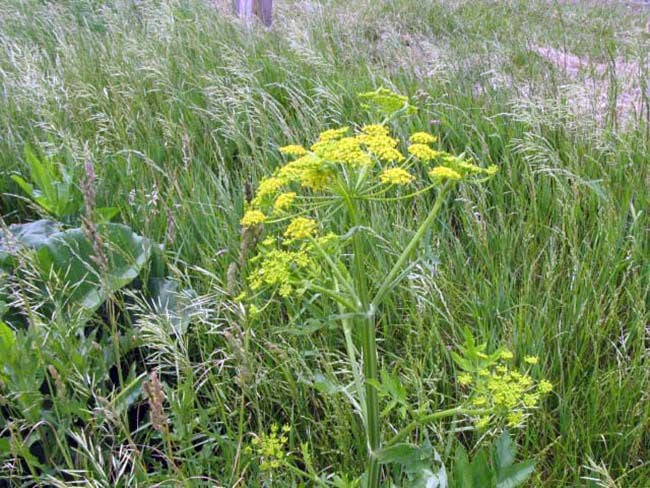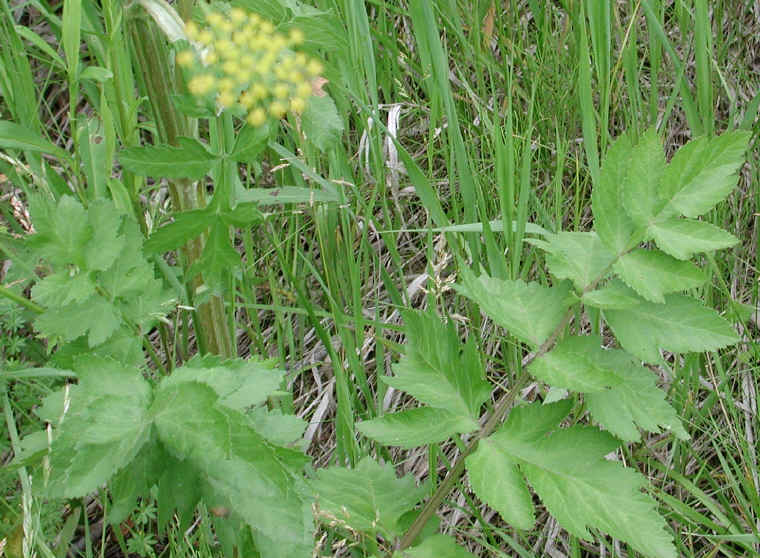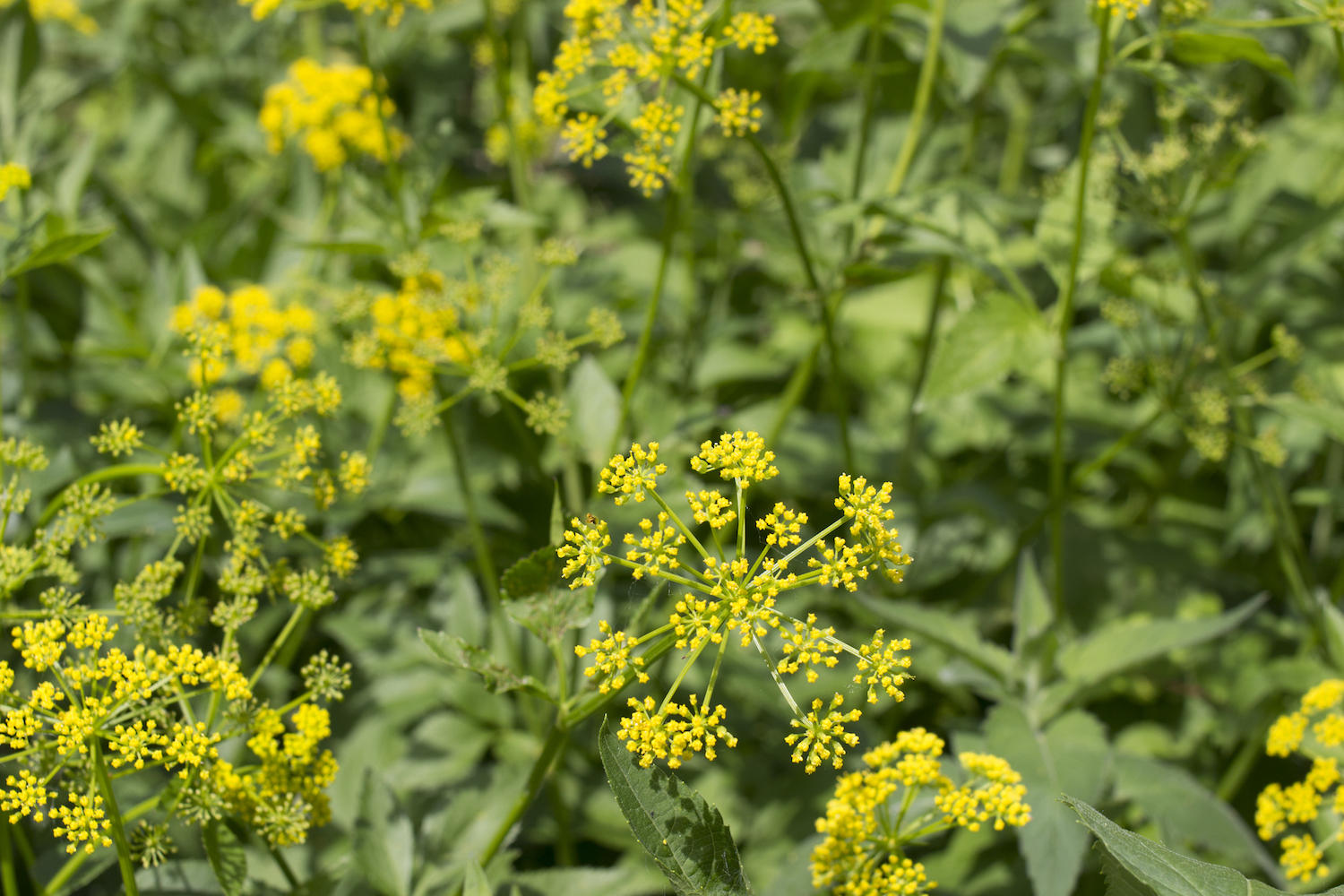

They are bi-annual, which means they flower the second summer and then the plant dies. I have had one grow as tall as nine feet in a wet area.They prefer flood plains and wet ground, but will grow anywhere. I have cow parsnip in my garden on purpose. Cattle will eat cow parsnip, hence the name. Giant hog weed is an invasive species, cow parsnip is native and an important food crop for deer. (daucus carota) or a type of angelica that is sold as an ornamental.Cow parsnip (Heracleum lanatum) and giant hog weed (Heracleum mantagazzianum) both grow over 6 feet tall in the flowereing phase. I am not an expert, but have some botnical and horticulture training.Don’s plant sounds like Queen anne’s lace or wild carrot So to figure out a difference, you need to know just what species of plant is being referred to as “Wild Parsnip” before you decide if they’re the same or different species to the cultivated parsnip we eat.

Common names can confuse–there is a “Wild Parsnip” in Europe which is another plant species all together. You can see that the Parsnip, Cow Parsnip & Water Hemlock are all different genera. That family, however, has over 3000 species, so it’s more important to compare the genus names (the first of the two names in the latin binomial naming system). Water Hemlock ( Cicuta virosa) is another plant in the Apiaceae (carrot) family. It’s related to parsnip at the family level. Cow Parsnip is also known as Heracleum maximum.

In North America, Wild parsnip is Pastinaca sativa growing wild (or as you say, escaped from cultivation). It’s a plant in the carrot family (Apiaceae). Parsnip, the root veggie we eat is also known as Pastinaca sativa. That said, here’s how I understand the differences between the plants you mention: Water Hemlock) you should be very cautious when differentiating plants from each other. Please keep in mind that I’m not an expert, and when you’re dealing with poisonous plants (e.g. stems have spots or blotching, red or purple in colour.hollow stems are between 3-8 cm in diameter.flowers in umbel shape, larger than 15cm in diameter.large plant, often over 2.5 m high (when mature).Just in case you hate the idea of a dichotomous key, or have questions about a non-flowering plant, here are the key differentiators between Giant Hogweed and other similar-looking plants: Keep in mind that Cow Parsnip is phototoxic, too. The stem may be purplish, but is mostly green with no blotching or spots. It will have fine hairs, but no stiff bristles. Cow parsnip will have between 15-30 rays.ĥ: Good news! This plant is probably Cow parsnip. Giant Hogweed has flowers with over 50 rays (a part of the flower structure which I’ve illustrated above). Is the stem reddish or purple, with spots and stiff bristles?Ĥ: This plant is probably Giant Hogweed. Note that Water Hemlock is extremely toxic if consumed.ģ: Look at the stem of the plant. It could be Queen Anne’s Lace or Water Hemlock. When mature, Giant Hogweed will have flowers up to 1 meter in diameter. If it is 14 cm in diameter (measured from flower edge to flower edge) or smaller, go to 2Ģ: Good news! A small flower means that this is probably not Giant Hogweed. If it is 15 cm in diameter (measured from flower edge to flower edge) or larger, go to 3

Answer each question with one of the provided choices, go to number and you will come up with an identification. The key is dichotomous, meaning that you will be given two choices. Please be aware that this key will only work with a mature plant, and Giant Hogweed can take two years to reach the flowering stage. So beginning with the assumption that you have a plant with an umbel of white flowers in the GTA, you can try your hand at identification with this key. The confounding factor here is all four plants above have white flowers in an umbel (a botanical term to describe the arrangement and shape of the flowers-I’ve included an illustration of what an umbel structure looks like below). With the caveat that you should have an knowledgeable plant person confirm any identification, let me quickly outline how you figure out if that plant is Giant Hogweed or something else.
#WILD PARSNIPS PICTURES HOW TO#
Many people, however, don’t know how to identify Giant Hogweed or know how tell it apart from Cow Parsnip ( Heracleum maximum), a native species (and only somewhat phototoxic).
#WILD PARSNIPS PICTURES SKIN#
Why the hubbub? The sap of Giant Hogweed, on the skin, can lead to a severe skin inflammation called phytophotodermatitis. Normally, when an invasive species is found, it does not generate this kind of buzz. The Toronto media is ablaze with reports that Giant Hogweed ( Heracleum mantegazzianum) has been found within the borders of the GTA.


 0 kommentar(er)
0 kommentar(er)
